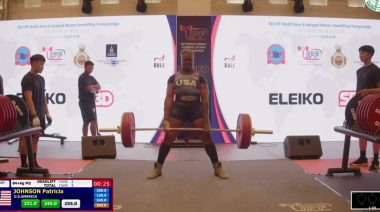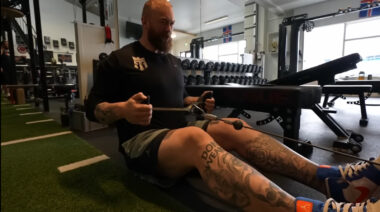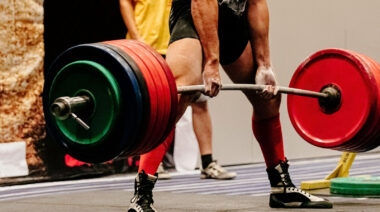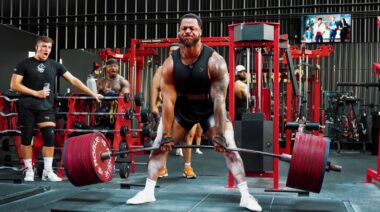Professional powerlifters often compete using supportive equipment. Supportive equipment, such as a squat suit, is generally known to improve the performance of lifters trained to use them. But science has no real data on how supportive equipment improves performance – until now.
Today’s article from the Journal of Strength and Conditioning Research examined eight elite male powerlifters. Each man had squatted over 700 lbs in a squat suit before. Yeah, these dudes were strong.
First, each man’s 1RM squat was measured raw, without the use of supportive equipment. Then they all returned for two more sessions to perform squats at 80, 90, and 100% of 1RM both with and without the squat suit. Each man was given a fitted double-layered squat suit from Inzer.
The results are very interesting. Maximal force applied to the ground was not significantly different with or without the squat suit. But speed and power were both significantly greater with the squat suit. The authors theorize this is due to stored elastic energy in the squat suit being released on the drive upward. But the fact that maximal force wasn’t significantly different is still surprising. The authors go on to theorize that the squat suit allows the lifter to keep a more upright torso. This more evenly balances loads across the knee and hip joints. I reviewed another study that indicated weightlifting shoes can also help maintain an upright torso, even among powerlifters.
My conclusion: This is a great start in understanding supportive equipment, but the authors readily admit that more research is necessary. One data point I’m surprised was not taken was each lifter’s 1RM using the squat suit. Hey, we’ve got their raw 1RM. Why not take the geared 1RM for comparison and measure force and velocity during that lift, too? Nobody disputes that squat suits increase squatting performance, but we’ll need more research to understand exactly why and by how much.
References:
1. Blatnik, Justin, Skinner, Jared, and McBride, Jeffrey. Effect of Supportive Equipment on Force, Velocity, and Power in the Squat. Journal of Strength and Conditioning Research 26:12, 3204-3208, Dec 2012.






